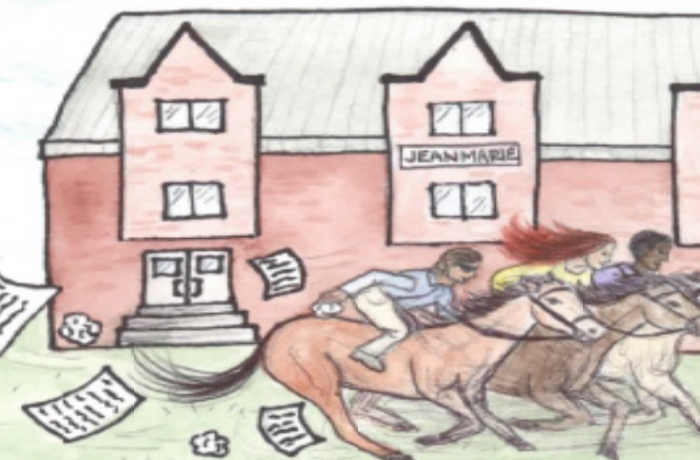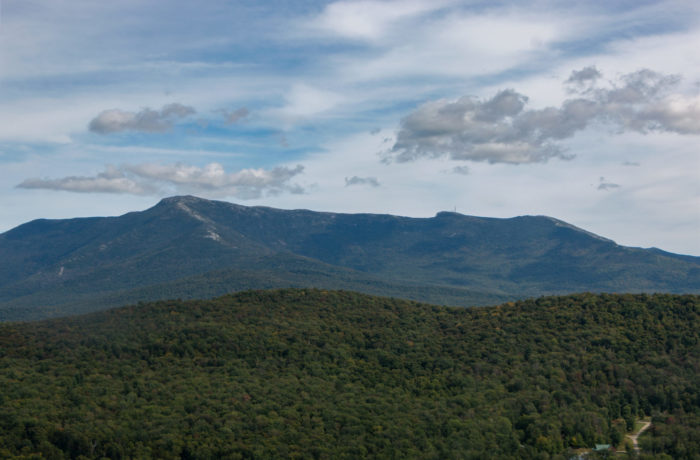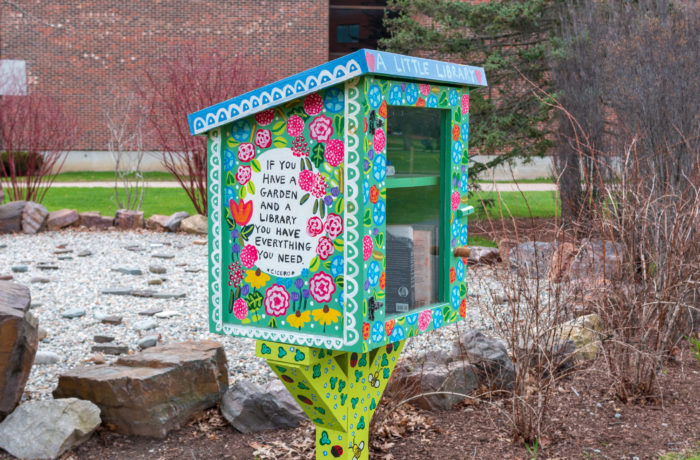By Madeline Clark
Senior Editor
Why do cow farts and oxygen excite John O’Meara? If the LUVOIR telescope he is working on comes to fruition, he would have the ability to view them in the galaxy, if they’re out there, and prove the existence of other forms of life.
“I’m pretty sure that it would be one of the most exciting discoveries that could be made in the history of humankind,”said John O’Meara, professor and chair, department of physics.
In O’Meara’s small office in Cheray he meets with students and works on his own research, much of it informed by his access to the Hubble. The room is full of images of the cosmos, a map of “the Heavens,” and NASA mementos from talks and meetings. O’Meara shared his characteristic energy, standing up as he spoke and waving his arms about, bringing his passion for his work to life.
O’Meara describes the telescopes he works with as “past, present, and future.” The future, he said, is the LUVOIR telescope he and his colleagues hope to build and launch into space around the year 2030. O’Meara said that LUVOIR would exceed the size of the largest ground based telescope.
“This would be the telescope that could definitely tell us whether or not there’s life out there,” O’Meara said. This is where the cow farts come in. LUVOIR would be powerful enough to take images of planets like the earth around stars like the sun, tens of light years away, he said. “More than that, it can make measurements of those planets’ atmospheres and look for things like methane and oxygen,” he added. “Trees make oxygen. Cows fart and make methane,” he said with a laugh. The two gases offer a big hint that there’s life on a planet, according to O’Meara.
For now, O’Meara works with data from the Hubble telescope, that has been in low earth orbit since the spring of 1990, said Marc Postman, a distinguished astronomer at the Space Telescope Science Institute, in a recent telephone interview. “It revolutionized astronomy because it was the first large telescope in space,” he said.
O’Meara described the Hubble as a long metal tube in space. “Here on earth [we need] domes to protect telescopes…from wind and rain,” he said. “In space there’s none of that crap.” For that reason, the telescope does not resemble those on earth.
Postman said that data from the Hubble can usually be accessed within 24 hours of observation via a link sent to observers’ computers. Being allotted the time to observe images from the Hubble is a competitive process. According to O’Meara, every 12 to 14 months the Hubble has a cycle and every cycle astronomers are called to write proposals for a chance to use the telescope. “There’s this thing called a time allocation committee which decides which [proposals] are the most important science questions,” he said.
Five out of the 11 proposal teams O’Meara was a part of in cycle 25 [the most recent cycle] were granted time to use the telescope. He said the data is coming in now and that he is using some of it to explore how galaxies get the gas they need to form stars. “When you make stars you make planets with them and when you make planets with them occasionally you have liberal arts colleges on them,” O’Meara said.
“Whenever you get time on Hubble you get happy because it’s the greatest toy in the world,” O’Meara said. The Hubble, as well as ground telescopes, allows O’Meara to study what he calls “the story of us” through cosmological history.
“The air [we’re] breathing is the result of a previous generation of stars that ended their lives maybe seven or eight billion years ago,” O’Meara said. “If we want to understand how we got here we have to let the telescope be the time machine.”
According to Postman, telescopes like the Hubble allow astronomers to see early parts of the universe that date back some 12 billion years. “[It has] informed us that structure was around in the universe a lot sooner than we thought,” Postman said.
For O’Meara, astronomy and the observations he has made with ground based and space telescopes make for a “pretty good job.” He added that the completion of the new LUVOIR telescope would fulfill a childhood dream. “[It’s] something I’ve wanted to do since I was a kid: have something go to space, if not me.”
Learn more about the
LUVOIR at:
https://asd.gsfc.nasa.
gov/luvoir/design/


